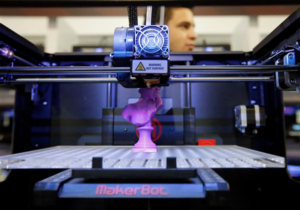Truck Accident Lawyer Baltimore can review your case and help you file a claim for your medical expenses, lost income, pain and suffering, and other damages. They can also locate helpful evidence such as dashcams, security, home or commercial video, eyewitness accounts, and trucking company hiring and training records.
Truck accidents are more complex than regular car crashes because trucks are much larger and heavier. Because of this, it is important to hire a Truck Accident Lawyer with the experience and resources necessary to handle these types of cases. Choosing the right attorney for your case will help you secure maximum compensation for your injuries and losses.

The first thing to look for in a truck accident lawyer is their track record. Ask how long they have been practicing law, and find out if they have handled any truck accidents in the past. Also, find out if they have other practice areas, such as personal injury or bankruptcy law. You may want to consider hiring another attorney if they have a broad range of practice areas.
A good truck accident lawyer will conduct a thorough investigation into your accident. They will use eyewitness testimony, police reports, accident analysis, and the truck’s black box data to determine what caused your crash. Once they have a clear picture of what happened, they can identify the party responsible for your injuries and damages.
They will also have in-depth knowledge of trucking laws and regulations. This includes rules regarding driver qualification, cargo loading, and other factors that can contribute to an accident. A truck accident lawyer will also know how to identify violations and hold responsible parties accountable.
Finally, a good truck accident lawyer will have strong analytical and investigative skills. They will be able to assess the evidence, reconstruct your crash, and determine the responsible parties. They will also be able to gather documents, conduct interviews, and depose witnesses.
Moreover, they will be familiar with all procedures involved in a court of law. This includes filing pleadings, conducting discovery, and trial preparation. They will also have the ability to communicate clearly and effectively with their clients. This is crucial because truck accidents are complex and time-consuming, so you will need an attorney who can keep you informed and updated throughout the process. Finally, they will be able to provide you with the financial compensation you need for your medical bills, lost income, property damage, and emotional distress.
Caseload
A truck accident lawyer can help you recover the financial compensation you deserve for your medical expenses, lost wages, property damage, and other damages. They will investigate your case, build a strong evidence file, and negotiate with insurance companies on your behalf. If negotiations fail, they will prepare to take your case to trial.
When choosing a truck accident lawyer, look for one with extensive experience and a high success rate. They should also have a manageable caseload so that they can dedicate ample time to your lawsuit. In addition, they should be communicative and respond to your questions within a reasonable period of time.
In addition to the above, a good truck accident attorney should have excellent attention to detail. This is particularly important when it comes to reviewing medical records and accident reports. They must be able to spot inconsistencies and discover new evidence that could make a difference in your case’s outcome.
When evaluating potential lawyers, be sure to ask how many cases they currently have and what their average case value is. A good truck accident lawyer should have the resources and staff to handle several cases at once, but they should not be so busy that they cannot give your case the time it deserves.
Another thing to consider is whether the truck accident lawyer will be working on your case personally or assigning it to a junior associate. Some law firms use this method to “churn and burn” cases, dumping them onto junior attorneys without sufficient oversight or review. Ideally, you want a firm that will assign your case to a senior attorney who can supervise a junior associate and provide feedback.
The best way to determine how well a truck accident attorney will work on your case is to talk with them in person. During this consultation, you should be able to get a feel for the lawyer’s personality and how they work with their clients. They should be able to explain complex legal terms in an easy-to-understand manner and keep you updated on the status of your case.
Fees
A Truck Accident Lawyer can help you recover compensation for your damages. They will take care of all the details, including investigating your crash, identifying at-fault parties, and building a strong evidence file. They can also negotiate with insurance companies to get you a fair settlement. If necessary, they will represent you in court. In addition, they can handle all communication and documentation related to your case. They can also help you recover lost income, medical expenses, property damage, and damages for pain and suffering.
The fee structure can vary between lawyers, but most personal injury attorneys who specialize in truck accidents work on a contingency basis. This means they only get paid if they win your case. This can be beneficial for victims who may not have the money to pay for an attorney upfront. However, it is important to ask your lawyer about their fees before hiring them. Some firms have hourly rates, while others charge a flat rate for their services. Hourly fees can be difficult to budget for, and they can increase if your case takes longer than expected.
A good Truck Accident Lawyer will provide you with an initial consultation for free. This is a great opportunity to discuss your case and determine whether they are the right choice for you. During this meeting, you should be clear about your expectations and financial ability. A good attorney will understand and respect this.
Some attorneys may outsource some of their work to junior associates or paralegals. This is not a bad thing, but you should be sure that you are working directly with the lawyer who will handle your case. This is important because it ensures that you will have a thorough understanding of the case and all of its complexities.
Other costs to consider when choosing a Truck Accident Lawyer include expert witness fees, court and filing fees, and other case-related expenses. It is important to understand how these fees are calculated so that you can make an informed decision about which lawyer is the best fit for your case.
Reputation
When a truck accident happens, it is often not just the truck driver and trucking company that are liable. It may be a manufacturer, repair shop, or even the road authority that is responsible. The best way to identify the liable party is by conducting a thorough investigation. This can uncover a wide variety of facts that can be used to hold the responsible parties accountable and secure maximum compensation for you.
It is important to choose a firm that has experience in handling truck accidents. This will give you confidence that the firm has the staff and resources to handle your case. Larger firms will also have the technological resources to produce high-quality accident reconstruction videos that will convince a jury or insurance company that the defendant caused your crash.
You should also find out how many truck accident cases the attorney has successfully litigated and taken to trial. This information should be available online, so you can check out the lawyer’s track record of success. It is also a good idea to ask how often the lawyer will communicate with you and if they will assign a paralegal to your case.
A good truck accident lawyer will take the time to understand your unique situation and provide tailored legal advice based on your specific circumstances. They should be able to explain how much you are entitled to in terms of damages, such as the cost of medical treatment and future care. They will also be able to help you determine if you are entitled to compensation for pain and suffering.
Truck accidents are very serious and can cause severe injuries that require extensive medical treatments and long-term care. If you have been injured in a truck accident, you should seek the assistance of a top-rated New York City Truck Accident Lawyer as soon as possible. A seasoned attorney can protect your rights and ensure that you are fully compensated for all of your losses.




